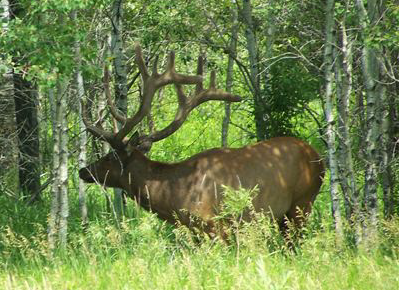|
|
|
May 23, 2023
In this issue, get details about the elk hunt lottery, a reminder to leave fawns alone and fun facts about deer.

Apply to hunt elk in Minnesota
Interested in hunting elk? Hunters have through Friday, June 16, to apply for one of 17 elk licenses offered this year by the DNR.
Seasons will run from early September to mid-October. Hunters can choose from two license options. One license is for an antlerless elk, which can be a female or a young male. The other license option is for either a bull or antlerless elk.
New this season, the DNR expanded the boundaries of Elk Zone 20 near Lancaster to better encompass areas where elk have been during elk hunting seasons. The zone expanded by about 6 miles to the west and 3 miles to the south.
Please review the elk season structure on the DNR website prior to entering the lottery to ensure you apply for the license you want.
|

DNR urges people to leave deer fawns alone
The DNR asks that people avoid disturbing or touching deer fawns, which are born around this time of year.
Most fawns are born in mid-May to mid-June, and fawns do not attempt to evade predators during their first few weeks of life. Instead, they remain still to avoid being seen. During these times, fawns are learning critical survival skills from their mothers but are often left on their own while their mothers forage watchfully nearby.
Be assured deer fawns are likely fine even if they look abandoned or fragile. Even if the fawn is known to be wounded or abandoned due to car strike or animal attack, do not transport it without talking to a wildlife rehabilitator. For more information about what to do when people find fawns or other species of young wild animals, visit the DNR website.
|

Deer facts: Twins or triplets help replenish white-tail populations
White-tailed deer in Minnesota mate in November or early December, during a breeding season known as a “rut.” After about 7 months of pregnancy, the female may give birth to one to three fawns.
The likelihood that females will have twins, or the twinning-rate, is correlated to the body condition of the mother. Does going into the winter in good body condition, and maintaining good condition through the winter, are more likely to have twins or triplets in the spring. Having a high twinning-rate allows deer populations to reproduce quickly and helps ensure that the population stays replenished in spite of hunting, natural predation and other mortality factors.
|
|
|
|
|
Get complete hunting and CWD information
Deer hunters, please regularly check the DNR deer hunting page for the most recent hunting information. Find out how to get your deer tested for chronic wasting disease at the DNR CWD webpage.
Have Minnesota wildlife or deer hunting photos to share? Upload your photos so we can share them in DNR email updates, social media and our website.
|
|